EyeWriter
The EyeWriter, was created by members of Free Art and Technology (FAT), OpenFrameworks, and the Graffiti Research Lab, and was sponsored by The Ebeling Group, the Not Impossible Foundation and Parsons Communication and Technology.
About this work
The EyeWriter is a low-cost, open source eye-tracking system designed to allow people with limited mobility to draw using their eyes. It was created by members of Free Art and Technology (FAT), OpenFrameworks, and the Graffiti Research Lab, in collaboration with well-known graffiti artist TEMPTONE. TEMPTONE was diagnosed with Lou Gehrig's Disease, or Amyotrophic lateral sclerosis (ALS), in 2003. This disease leaves people immobilized and only able to communicate with their eyes. In 2009, the EyeWriter system enabled TEMPTONE to again make artwork in the streets of LA. Using the system from his hospital bed, he was able to sketch graffiti using his eye movement and have it remotely projected onto buildings several miles away.
The appeal of this work is it was produced by a group of people who then opensourced it, allowing others to contribute and add to it. That has allowed for iterative variations of the original. With the release of step-by-step guides to building the EyeWriter and its open-source, copyfree status, the project is available to almost anyone, anywhere to reuse or extend. For example, it is now being distributed to ALS patients and neuromuscular disease support groups in India, while another version allows children’s drawings to be reproduced with a robotic arm.
“Art is a tool of empowerment and social change, and I consider myself blessed to be able to create and use my work to promote health reform, bring awareness about ALS and help others.”
~ TEMPTONE
Integrative
The creators approach is to use off-the-shelf hardware and develop open-source software so that ordinary people are able to utilize great advancements that we have made in eye-tracking, computer vision and generative visuals in a cost effective way. Not only does the work emphasize technical innovation, but with the involvement of artists and patients it has equally strong aesthetic and ethical dimensions.
What is really intriguing about this work is that people are working on it and then actively endeavoring to give it away. This is part of the big challenge that the creators are looking a, in crafting a way to bring together people who are working in the open source hardware community and imbue it with a purpose that goes beyond trying to create an operating system into how we are trying to inform peoples lives.
Innovation
EyeWriter has looked at technical cost and utilizing the open source movement to improve on code and hardware beyond that which exists in proprietary constructs. It opens up access to eye- tracking, which has mainly been used in psychology research for example, by making it affordable. The main innovation here is that they married together a type of technology, eye tracking, with graffiti art and the idea of doing drive by projections - it is graffiti writing which is non-destructive and affords tremendous pleasure to the person doing it. It reminds us that just because you are physically immobilized in some ways does not mean you can’t participate in civic expression.
Impact
Having won awards at Ars Electronica and other venues, it's clearly been appreciated by the art community, but it also works within the technical open source community.
- Aisling Kelliher, XSEAD Curator
The example of the EyeWriter is powerful because of what it has developed into. There are a slew of ways that exemplify how you can build upon this work: in the medical domain, software domain or the participatory domain. If you see a type of work and it will function well within a hospital, in a school, in a gallery, on a street, then you start seeing that this work has utility and value in multiple domains.
It becomes exciting for a variety of people across many domains who might not have thought that they could participate in art making practice. EyeWriter exemplifies something interesting as there’s a diversity of ways that people can use it. The fact that they have used off the shelf products, made it open source and are fairly welcoming to anyone to come along and use it is different from other models.
By connecting software developers, hardware hackers, artists and ALS patients, and by using low-cost open source technology, there is a tremendous richness in what they have produced. You can see the impact it's had for the artist who has ASL and how he can participate, and for his family and how they see what this means to a person’s quality of life. Recognized for this, it was awarded one of six Golden Nicas at Prix Ars Electronica, the Brit Insurance Interactive Award, the Future Everything Award, and was noted as one of Time Magazine’s Top 50 inventions in 2010.
Further Reading
- The EyeWriter Project Site - http://eyewriter.org/
- TedTalk - Mick Ebeling: The invention that unlocked a locked-in artist
- Instructables guide to making an EyeWriter
- DIY Guide to the EyeWriter on EyeWriter.org
No comments yet. Why not add the first?
Acknowledgements & Credits
Eyewriter's core development teams consists of members of Free Art and Technology (FAT), OpenFrameworks and the Graffiti Resarch Lab: Tempt1, Evan Roth, Chris Sugrue, Zach Lieberman,Theo Watson and James Powderly.
With founding support from The Ebeling Group and the Not Impossible Foundation, and addition support from Parsons Communication Design & Technology.
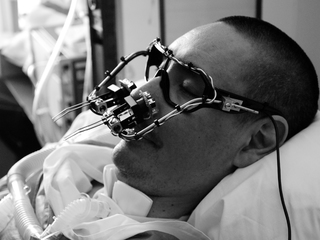
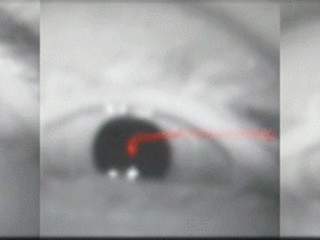
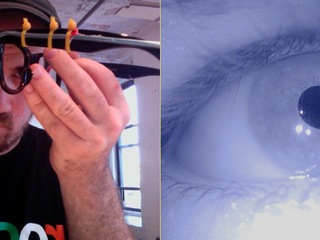
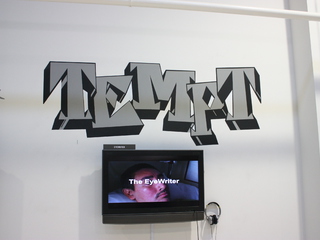
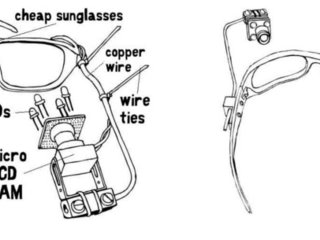
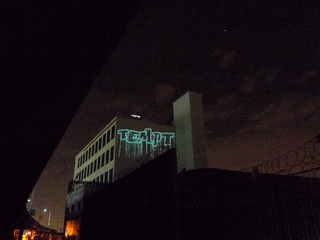
← Back to work
0 Comments